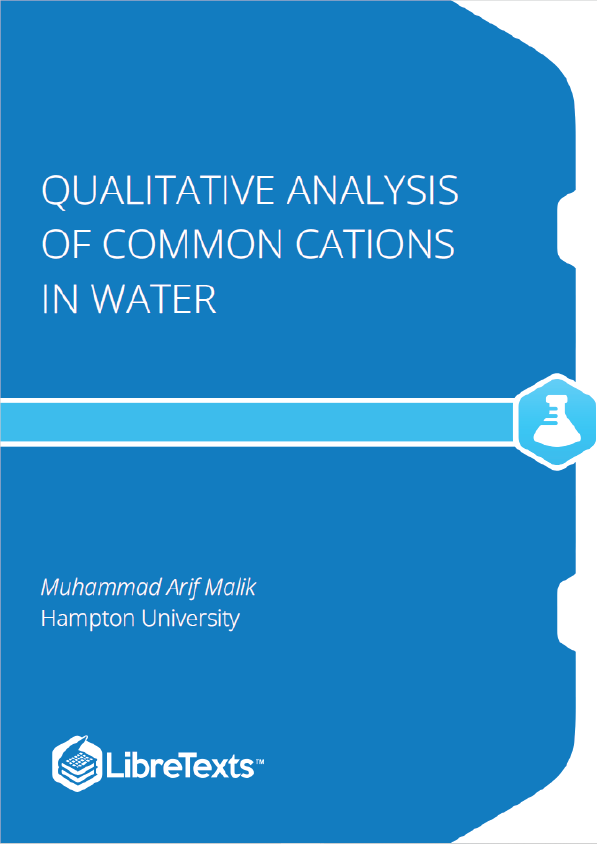1: Chemical Principles
The purpose of these experiments is to teach chemical principles behind experimental techniques required for the separation and identification of chemical substances. The techniques will be applied for the separation and identification of fourteen important cations in water solution as a model. The fourteen cations include: barium (Ba ), Bismuth(III) (Bi ), calcium (Ca ), cadmium(II) (Cd ), chromium(III) (Cr ), copper(II) (Cu ), iron(II) (Fe ), iron(III) (Fe ), lead (II) (Pb), mercury(I) (Hg ), nickel(II) (Ni ), potassium (K ), silver(I) (Ag ), sodium (Na ), and tin(IV) (Sn). The cations will be separated into sets of five groups and then ions within each group will be separated and identified. The exercises will involve dissolution, precipitation, acid-base, and oxidation-reduction reactions controlled based on solubility variations with counter ions, Le Chatelier’s principle, common ion effect, pH control, etc. The use of chelating agents and redox-reagents will be demonstrated with practical examples. The chemistry principles involved will be described first, followed by a review of the basic experimental technique used in these experiments. Then, the separation of groups of cations followed by the separation and identification of ions within each group will be described.
Water -a universal solvent Water is one of the most important solvents because it is present all around us -it covers more than 70% of the earth and it is more than 60% of our body mass. Water is a polar molecule having a partial negative end on oxygen and a partially positive end on hydrogen atoms. that can dissolve most of the polar and ionic compounds. In ionic compounds, cations are held by anions through electrostatic interaction. When an ionic compound dissolves into water it dissociates into cations and anions, each surrounded by a layer of water molecules held by ion-dipole interactions. The water molecules around ions make ion-dipole interaction by orienting their partial negative end towards cations and their partial positive end towards anions. The energy needed to break ion-ion interaction in the ionic compounds is partially compensated by the energy released by establishing the ion-dipole interactions. The energy gained due to ion-dipole interactions and nature’s tendency to disperse is the driving forces responsible for the dissolution of ionic compounds.
The solubility of a solute in a specific solvent is quantitatively expressed as the concentration of the solute in the saturated solution. Usually, the solubility is tabulated in the units of grams of solute per 100 mL of solvent
Precipitation reactions
Precipitation reactions are a class of chemical reactions in which two solutions are mixed and a solid product, called a precipitate, separates out. Precipitation reaction happening upon mixing solutions of ionic compounds in water can be predicted as illustrated in Figure . The first step is to list the soluble ionic compounds and then cross-combine the cations of one with the anion of the other to make the potential products. If any of the potential products is an insoluble ionic compound, it will precipitate out. For example when solution is mixed with solution, is a cross-combination that forms an insoluble compound, it will precipitate out.










